According to Wikipedia, Peter Schmidt was “a Berlin-born British artist, painter, theoretician of color and composition, pioneering multimedia exhibitor and an influential teacher at Watford College of Art”.
He and Brian Eno met at Ipswich art school in the late 1960s and they discovered they both had independently invented a system of small quotes and axioms to overcome creative blocks. They later combined this systems and published the Oblique Stategies cards in 1975.
“Apart from our collaboration on this record, Peter and I have been working together and comparing notes for some time. In 1975 we produced a boxed set of oracle cards called “Oblique Strategies“, which were used extensively in the making of this record.” Brian Eno
Schmidt explored many media and during his short life he produced a huge amount of prints, books, paintings, sounds and films. The collaboration with Eno consisted of 1500 different silk screen portraits of the musician, a watercolor entitled “Portrait of Eno with Allusions” (considered for the cover of Eno’s LP “Before and After Science“) and four prints, that were later included in the first copies prints of the same album.

“Four Years”
For many reasons, such as its contradictory and eclectic nature, “Before and After Science” is still considered amongst the most influencial albums of the 70’s. At times clinical, mechanical and cold, at times flirting with mainstream pop and New Wave, the LP’s sound was referred by Eno as “ocean music”, opposed to Another Green World‘s “sky music”, as many watery references appears in the lyrics of “Backwater”, “Julie With…” and “By this River”.
In many ways this album can be considered a conceptual artwork, as it was consciously conceived with “a sound-over-sense approach”. Songwriting and lyrics were not the main focus: songs like “Julie with…” are ambiguous works whose meaning is left open to speculation. Lester Bangs stated that the lyrics themes “could be a murderer’s ruminations, or simply a lovers’ retreat… or Julie could be three years old“.

“Look At September Look At October”
The influence of Kurt Schwitters is perceivable in the way lyrics were “only complementary variables” to the music on the album.” (Tom Carson of Rolling Stone). Furthermore, samples of Schwitters’ poem “Ursonate” can be heard in the song “Kurt’s Rejoinder”.
The way visual and sound object are deeply intertwined in the production of the album is well described by Eno himself in this brief commentary on the four prints by Peter Schmidt (from a Melody Maker article of January 1977):
This evening I visited Peter Schmidt (the painter who did the cover for Tiger Mountain and Evening Star, and with whom I published Oblique Strategies). He has just returned from a holiday in Madeira, and we look at the 12 watercolours he made there. The last three of the series are quite exceptionally beautiful – a tiny road winds down the side of an almost vertical mountain whose peak is lost in the clouds.
Peter describes his walk from the top of the mountain, and says it was frightening since there were man-sized rocks fallen on the road. We discuss the idea of fear as an aid to perception. I describe an experience I had in Scotland recently where I climbed a very steep hill at twilight – absentmindedly not paying much attention to where I was going – and came to a halt, breathless and exhausted, on a small plateau near the summit. For the first time I looked to see where I was.
The plateau was covered with dead ferns, which glowed a brilliant fiery orange in the dusk. I was tired enough not to try to reduce the experience to words and concepts, so I just stood open-mouthed for some minutes.
This was an instance of exhaustion as an aid to perception – presumably the conscious mind resigns this continual obsession with classification and the attendant reassurance at times like this, and so the quality of the experience is unfiltered.
Later in the evening we talk about the work of Die Brucke, the group of German painters active between 1905-25, who impressed us all so much in Berlin. I particularly liked Otto Mueller and Karl Schmidt-Rotluff.
Peter posed the question: “What could one do now that would have the sense of daring which those works had?” I reply that I think the answer must lie in doing things that are very quiet, which make no assault, and perhaps do not obviously trade in novelty. Like watercolours. At a time when drama is at a premium, reticence and delicacy communicate best.
Before I leave, we discuss the possibilities of marketing visual objects in the way that records are sold. We both agree that this would drastically alter the nature of contemporary painting, since it would once again put it in touch with demand on the level of a genuine response to the work itself, rather than to its “value” (be that financial or “cultural”).
I walk from Peter’s in Stockwell to Victoria station. It is a cold, exhilarating night. I am thinking about writing a song called “Man Making Measurements And Dancing.” I can’t sleep until 4.00 am because I have a flurry of ideas which won’t wait their turn. It is most annoying. (Quote via: Exile on Main Street)

“The Other House”
As talented as he was, Peter Schmidt never came into prominence in the art world. He once wrote to Eno: “In a roomful of shouting people, the one who whispers becomes interesting.” In a time when everybody was switching back to “Oil on canvas” as a guarantee for “real art”, Schmidt showed an eccentric -and unfashionable- interest for water colours and paper. When the “general Schnabelization of artistic behaviour was in full cry”, “paintings and artistic egos were growing by the acre, and the business of marketing them had crossed over into real estate”, Schmidt retired towards a monastic attitude of tiredless working, employing a technique that firmly located him among Sunday painters in the art circles’ consideration.
The last exhibition the artist planned (called More than Nothing, at Paul Ide Gallery in Brussels) was of collaborative works with Brian Eno, but Schmidt died suddenly of heart attack during january of 1980, on holiday in the Canary Islands, just days before the opening.

“The Road to the Crater”
In his words of appreciation for Peter Schmidt, (An homage to the missing collaborator) Eno stated:
“As with many good artists, one’s admiration for Peter’s work increases with familiarity. To follow the threads that are woven through his work, to watch the way that they cross and mesh with new threads and with older ones picked up again is to see a graceful and brilliant dance in motion. That this same pace and brilliance characterized his everyday life came, at first, as something of a surprise. He never raised his voice.”
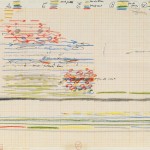
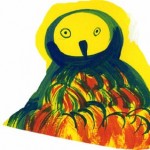
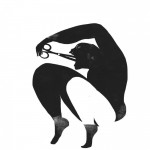
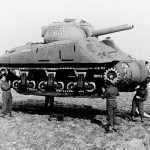
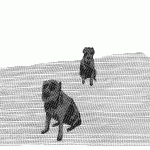
i wish you had put up high res images of the Peter Schmidt prints so i could make full size copies. I lost my prints in a house move :-(
I wish I could find them!
I was lucky enough to be given some of the Tiger Mountain limited edition signed prints and I have been thinking about selling one of them.
Nice piece, thank you.